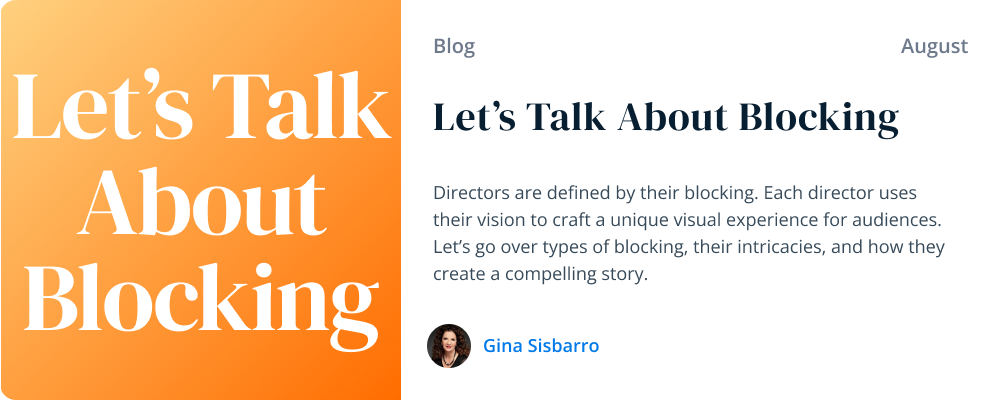Blocking: such a simple term, however in theatre, it has several defining meanings to the point where it represents the director. You can watch the same play in several theaters, and although the lines are the same, the presentation is entirely different.
Directors have two visions; what is directly in front of them and how we visualize it. It is the most intriguing part of directing. Blocking can be:
- Behavioral – as in entering a kitchen and fixing a cup of coffee.
- Psychological – as in a human or emotional need. Let’s stick with the cup of coffee example; the emotion of the need for coffee to stay awake or the need to sober up. Two different needs can be performed entirely differently.
- Aesthetic – A little tougher to understand; however, it is the giving of pleasure through the composition of bodies in a space. How is the actor moving to present the dialog or the action in the best possible visual understanding to the audience?
- Architectural – The relationship of the actors to the set. Currently, I’m working on blocking a train station ticket booth. I need to have two ticket proprietors in the same booth with two windows and the purchasers of the ticket forming lines and moving where every face and action is viewable from any angle. Yes—as a director, we go to sleep with these intricacies in our heads.
- Character Identification – Every action, every word, and every emotion upon immediately opening their mouth should present who they are in the production, from a diva actress to a man on the street.
Ah yes, I bet the average theatre-goer has no idea what goes into making a play, whether it is a camp, school performance, amateur production, or professional production. To direct, you need the skill and imagination that goes beyond the script and the plot. Great director’s careers have been made by having this singular talent of blocking. A director may have every other skill, but the lack of visualizing the blocking means a director will fail by turning a great play, into a great boredom. One can say that blocking is the “Big Gorilla” in the room.
What’s best about blocking is the director’s prerogative to change their mind. Blocking is an opportunity for the director and actor to discuss and adjust a scene; especially when working with youth when they may feel uncomfortable with certain actions. How do you make it look real yet comfortable for the actors? This usually happens with scenes that call for attraction of the opposite sex or “the kiss”. It’s amazing how many angles you can create for a fake stage kiss!
To sum it up, let’s say you don’t understand the language. A person should be able to follow the storyline by what was created on stage with the creation of space, with every touch from an object to a person, to behavior, posture, and gesture. The best description I can give is going to an Italian Opera such as Otello without the translations overhead. If you have figured out the storyline of this five-act tragedy without understanding a single word, the director has done their job! BRAVO!





